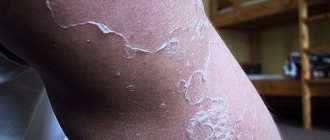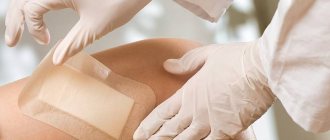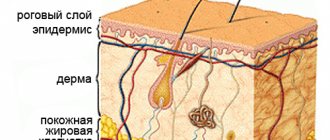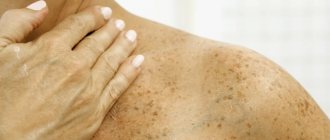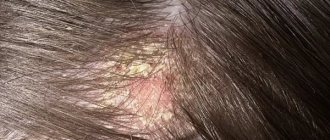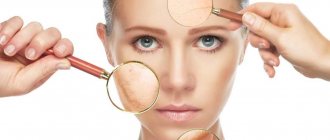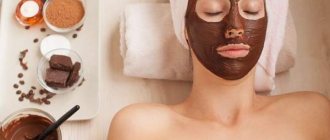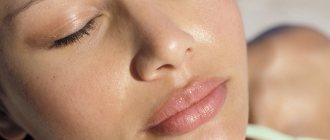Finger burns - how dangerous are the injuries?
Among all the traumatic injuries encountered, one of the most common is a finger burn.
This can happen both in domestic and industrial conditions, and in the first case, burns are recorded much more often. Injuries of this origin are quite common during the cooking process. Accidental touching a hot frying pan or saucepan, a boiled kettle, a switched-on oven or any other objects causes a burn.
Often, at home, a burn on a finger occurs due to carelessness when working with electrical appliances, for example, with an iron or soldering iron. Although at first glance injuries of this type do not pose a serious health hazard, a burnt finger cannot be left without treatment.
A bubble has formed
What should a girl do if she burnt her finger? What to do at home if a bubble forms?
As with any thermal burn, it is necessary to cool the affected area of the skin for 20-30 minutes, then rinse the entire area around the burn with furatsilin solution. The resulting blister should not be cut or attempted to be removed. If the bubble is small, then it does not need to be punctured. It is enough to lubricate it with a special ointment. If the area of the blister is large, or there are several of them, but of medium size, then it is necessary to puncture it with a disinfected needle to remove excess fluid underneath it. Then you should apply an ointment that contains an antibiotic and bandage your finger.
Classification of finger burns
Depending on the nature of the origin, burns to the fingers or toes are divided into two main categories:
- thermal. The reason here is the exposure of the finger to hot temperatures. This can be either hot objects or devices, or exposure to steam or boiling water. The most complex and dangerous of all thermal burns are those caused by open fire. It is also quite common for a finger to get burned from boiling water, hot oil, and many other hot substances and devices;
- chemical. Such burn injuries occur due to exposure of fingers to various alkalis, acids and other chemical reagents. Mostly such damage occurs at work. But there are also cases when at home a person works with harmful aggressive substances without using protective equipment, which is the cause of chemical burns.
Regardless of the type of injury - thermal or chemical, a person’s first question in such situations is “what to do if you burn your finger.” First of all, it is necessary to determine the severity of the damage and only then select effective means and methods for treatment.
Levomekol burn ointment
Water-based ointment, hydrophilic. It can be easily washed off and can be combined with other products. The medicinal components of this ointment easily penetrate the affected area and quickly give their effect.
The great advantage of this product is its antimicrobial and anti-inflammatory properties. It contains methyluracil and chloramphenicol, which destroy pathogens that can lead to wound suppuration. Burns treated with ointment fester less and heal faster.
The action of methyluracil is aimed at stimulating metabolism inside cells, which leads to the rapid restoration of affected structures. Methyluracil also promotes leukocytosis, which is very important for the fight against microbes - leukocytes are the first to defend against viruses, bacteria and fungi. Price 134.34 rub.
Types of burns by severity
The severity of the damage directly determines what treatment should be given for burns on the fingers, as well as the duration of skin restoration.
In medicine, burn injuries to the fingers, depending on their depth and size, are divided into four degrees of severity. A more detailed description of each degree is presented in the table.
| Severity | Symptoms of damage |
| I | This group includes superficial damage to the skin. Injuries are accompanied by moderate pain, and redness is observed at the burn site. |
| II | The second degree, in addition to pain and redness, is characterized by the appearance on the skin of watery blisters filled with a yellowish liquid. At the same time, the pain is more intense. |
| III | Stage three injuries are characterized by symptoms of the first and second, but the injuries are more serious. Burns of this severity are mainly formed as a result of prolonged thermal exposure to the skin. The site of injury becomes dark brown and dead tissue forms. Even if you correctly treat a burn of the fingers of such complexity, scars and cicatrices almost always remain at the site of damage. |
| IV | If a fourth-degree burn is diagnosed, the victim should be hospitalized as quickly as possible. If qualified assistance is not provided in a timely manner, such injuries cause great risks to life. Due to the penetration of the burn source into the deep subcutaneous layers, not only tissues are damaged, but also tendons and bones. In most cases, a finger after a 4th degree burn must be amputated. Such injuries occur when interacting with open fire or high concentration acids. |
The most common thermal injuries in everyday life are grades 1 and 2. The most painful injuries are:
- skin burns between fingers. In these places the skin is very thin and highly sensitive;
- injuries on the bends of the phalanges. Even with the slightest movement of the injured finger, the pain increases sharply;
- burns on the wrist always remind themselves when the edges of the sleeves of clothing come into contact with the wound;
- A burn to the fingertip is highly painful, making it almost impossible to do anything with an injured finger. Any touching of the burned skin increases the pain.
Never forget the consequences of thermal damage. If you do not promptly treat a burn of a finger, even if it is completely harmless, the wound may become infected and complications will be more serious.
Pharmacy products
There are many pharmaceutical and folk remedies that can be used to anoint a burn. But we will consider only the most effective and efficient ones.
Products containing dexpanthenol
Panthenol and its analogues containing dexpanthenol (pantothenic acid, vitamin B5) are considered the best remedies today. They are quite safe and effective. Dexpanthenol promotes better skin restoration at the burn site. Analogs of Panthenol include the drugs Dexpanthenol, D-panthenol, Bepanten, Pantoderm, etc.;
- Vinisol and Levovinisol. The actions of these drugs are similar to each other, but Levovinisole has more side effects. Both drugs are quite safe when used correctly. Frequency of application depends on severity;
- Herbal cream "La-Cri". The cream consists of natural ingredients and does not contain hormonal drugs or antibiotics, which means that the drug is absolutely safe;
- The drug Oxycyclosol includes antibiotics and anti-inflammatory hormones. It must be used with extreme caution and only under the supervision of a doctor;
- Additionally, antimicrobial drugs can be used, for example, Levomycetin gel, Levomekol or Syntomycin liniment . Such drugs are prescribed for severe cases and complications.
In case of chemical injuries, before deciding what to apply to the burn, it is necessary to establish what substance caused the injury:
- In case of acid exposure, the affected area can be wiped with a solution of baking soda;
- Alkaline lesions, on the contrary, are treated with weak acids, for example, acetic, citric or boric acid;
- Burns from phenolic compounds can be moistened with alcohol or vodka.
How to help
Regardless of the complexity of the injuries, extensive and deep or minor burns of the fingers, the speed and effectiveness of skin restoration depends on the correct first aid provided to the victim. If, due to thermal effects, only the superficial layer of the skin is injured, then emergency care consists of relieving pain and burning. If you observe signs of moderate or severe burns, you should call an ambulance or seek medical help yourself.
What to do after a finger burn immediately after the injury and how to alleviate the condition of the victim? The first steps for burn injuries are as follows:
- the first thing to do is to immediately eliminate the source of damage and thus stop the thermal effect. If shoes or clothing catch fire when interacting with fire, the flame must be extinguished with water or sand, and then the burnt items must be removed;
- Next, you need to apply cold to the damaged area. Cold water is an excellent option here;
- Apply a sterile bandage to the burn site, but do not squeeze your finger;
- To relieve pain, the victim should be given a medicine with an analgesic effect.
These are the first steps to take when dealing with thermal injuries. Moreover, depending on the nature of the damage, first aid for a finger burn is carried out differently in different situations.
Oil burn
How to relieve pain and what to do if your finger is burned in oil? First, you need to cool your finger, for example, keep it in cold water for 20 minutes. Along with eliminating painful sensations, cold also reduces the depth of the burn.
After cooling, carefully apply a sterile bandage to the burned area. This will protect the wound from infection. Usually, when you burn with boiling oil, blisters immediately appear on the skin.
You cannot pierce them yourself; if necessary, such actions can only be carried out by a doctor. When the bubble bursts on its own, the wound must be treated with an antiseptic or disinfectant and a light bandage applied on top.
Steam burn
If your finger is burned by hot steam, the procedure is almost the same as for damage caused by hot oil. Only in this case, blisters appear on the skin extremely rarely. Basically, the injury is accompanied by redness, pain and severe burning. You can relieve pain with local anesthetics.
What not to smear
Contrary to popular belief that the skin after a burn should be smeared with oils, doctors say the opposite: oil will interfere with normal heat transfer, which can lead to deeper damage. The same applies to various food products that are recommended to be used to smear burnt areas. In addition, when using them there is always a possibility of infection, which can cause serious complications.
Many people don’t know what to apply to a burn and start treating the burned areas with brilliant green, but this shouldn’t be done. Firstly, the brilliant green solution can cause severe pain. Secondly, using “green paint” can aggravate the situation by adding chemical damage to the thermal damage.
It is always worth remembering that any independent actions in case of burn injuries of any severity can lead to complications and other serious consequences. Therefore, if possible, it is necessary to consult with a specialist who will select the most appropriate treatment and give the necessary recommendations.
Damage to the skin caused by high temperatures or chemicals is called a burn. In domestic conditions, such damage is most often caused by hot steam, oil, iron or boiling water. If skin damage is more than 15%, you should immediately contact a specialist to avoid serious consequences.
In the case where the damage is of the first and second degree, if the victim is in normal health, it is not necessary to see a doctor, but it is important to know how to provide first aid and what not to do so as not to cause harm.
Damaged skin from a burn can allow infection into the body, so thoroughly washing your hands is a must if possible.
IMPORTANT! Under no circumstances should you apply oil to a burn! This will cause the skin to become covered with a film, air access to the wound will be blocked and the skin will suffer even more!
Important! It is also prohibited to apply alcohol-containing solutions to the damaged area!
Child's finger burn
No matter how carefully parents care for their children, in the quest to learn new things, quite often the child is exposed to various injuries. A burn on a child’s fingers is also no exception. This can happen either as a result of touching a hot iron or other appliances, or as a result of contact with boiling water.
A child's skin is very delicate, so even a minor burn on a child's finger is accompanied by severe pain. To alleviate the condition, the first steps for thermal injuries in children are the same as for similar injuries in adults. Only parents need to not only correctly and instantly help their child, but also assess the complexity of the damage.
If blisters appear, the baby should be shown to a doctor. The fact is that a child, not understanding his actions, can violate the integrity of the bladder, and this in turn increases the risk of infection.
Important! When trying to provide assistance when a child’s fingers are burned, it is strictly forbidden to apply vegetable oil, flour or strong ointments to the damaged areas of the skin. By doing this you are making the situation even more difficult.
Place a sterile bandage or napkin soaked in Dioxyzol or furatsilin solution on the wound. The skin can also be treated with Panthenol. A special Sofratulle bandage is very effective in relieving finger burns in children. If there are small children in the house, then such products should always be in your home medicine cabinet.
You should not give your child painkillers on your own without first consulting a doctor.
How to prevent burns in children
In order not to encounter problems with what to do if a child’s finger is burned, you should take care of the baby’s safety measures:
- Matches, lighters and other flammable items should be kept out of reach in the house;
- do not leave burning alcohol lamps or candles unattended;
- control every step of the baby when preparing food;
- leave hot pots with dishes only on distant burners, which the child cannot reach;
- After using household electrical appliances, immediately hide them in inaccessible places.
Do not forget that even short-term contact with hot objects or liquids can cause significant harm to delicate baby skin. If you adhere to the simplest safety rules and do not leave your child unattended for a minute, then the questions “burn your finger - what to do” will not bother you.
Folk remedies
In addition, there are many folk methods. However, doctors do not recommend using them, as this may worsen the situation. However, it is advisable to know these methods, since they can be useful in cases where you are thinking about how to anoint a burn, but there are no suitable medications at hand, and there is no way to call a doctor.
- Aloe juice. The medicinal properties of this plant are known to many. You should not lubricate burns with pure juice, but dilute it with clean water in a 1:1 ratio;
- Camomile tea. To prepare it, you need to pour a glass of boiling water over a tablespoon of chamomile flowers and leave for half an hour;
- St. John's wort (common) has long been known for its medicinal properties. It also helps great with burns. The recipe is the same as for chamomile: a spoonful of herbs in a glass of boiling water.
How to determine if a burn wound is infected
Very often, burn injuries to the fingers are accompanied by the formation of blisters, which are the main causes of infection and the development of inflammatory processes. The risks of such phenomena are especially high in cases of intentional or accidental opening of bubbles.
If an infection is associated with the injury, this can be determined by the following signs:
- the victim feels throbbing or acute pain, the intensity of which increases every day;
- increased body temperature;
- severe redness of the skin, which does not go away even after applying special antiseptics;
- observation of purulent discharge.
In most cases, infectious processes occur due to dirt, dust and other contaminants getting into wounds. That is why it is impossible to open the bubbles prematurely and on your own.
Burn ointment Panthenol
Panthenol is a good ointment for burns because it can come in the form of ointments, tablets, capsules, lozenges, cream, solution, lotion or spray. Thanks to this, the doctor can easily prescribe a specific type of panthenol drug to the patient.
Panthenol, when interacting with the human body, has the property of converting its active substances into pantothenic acid, which damaged tissues lack and thereby helps the sick body exchange cells, metabolize fats and saccharides, and produce glucocorticoids - these are hormones. Like all ointments, Panthenol also helps to heal faster and relieve the inflammatory process. Price 236.00 rub.
The drug normalizes skin metabolism and restores its integrity. Bepanten is used externally for burns, it is not greasy, and effectively destroys all bacteria. In addition, Bepanten has an analgesic and cooling effect. During treatment, the drug should be applied three times a day in a thin layer. Price 369.00 rub.
Medical treatment of burns at home
For mild thermal injuries to the fingers or toes, there is no need for special medical care. Treatment in such situations can be carried out independently at home. If the injuries are moderate or severe, then hospital treatment will provide proper and effective assistance to the victim.
How and how to treat finger burns at home? If you are not sure which medication is best to use in a particular case, then it is better to consult with a qualified specialist in this regard.
Today, there are a huge number of medications that have analgesic, anti-burn and disinfectant effects. All kinds of creams, ointments, sprays or gels can be used as such preparations. Which pharmaceutical product is the most effective and what is the best way to anoint a burn on your fingers? The list and comparative characteristics of the most popular pharmaceutical ointments are presented in the table.
| Name | Therapeutic properties | Mode of application |
| Levomekol ointment |
| The ointment is effective for burns of mild (1st and 2nd) severity. Apply to the wound twice daily for 5-7 days. |
| Panthenol. Available in the form of ointment, emulsion and spray |
| The drug is ideal for thermal damage of any severity and different origins. Apply to the skin twice a day until complete recovery. Non-addictive |
| Argosulfan with silver ions |
| Apply to the problem area 2-3 times daily. Duration of use is up to 2 months. Be sure to test before use, as the product may cause allergies. |
| Synthomycin ointment |
| Used in cases of infection of a burn wound, can be used for no more than a week |
| Rescuer |
| It is not advisable to apply immediately after a burn, only during further treatment. |
These are the most popular topical agents used for thermal injuries. What is the best way to anoint your fingers if you have a burn? This depends primarily on the individual characteristics and complexity of the damage.
In any case, when choosing a particular drug, you should carefully study the contraindications and only if they are absent, use it for treatment.
List of the most famous ointments
- Panthenol is an ointment with the active ingredient dexpanthenol, which has a positive effect on burned areas of the skin, accelerating recovery and scarring of epithelial tissue in mild chemical burns. The therapeutic effect of the ointment is achieved by improving metabolic processes at the cellular level.
The advantage of Panthenol is the minimum number of contraindications (except for an allergic reaction) and the possibility of use by both pregnant women and children.
- Levomekol is an anti-burn ointment with an antiseptic effect that successfully relieves inflammation and restores the skin. The active ingredients of the ointment are methyluracil and chloramphenicol.
The ointment is prescribed to victims of chemical burns whose wounds become infected or suppurate. A contraindication to application is individual intolerance.
- Rescuer is a well-known anti-burn balm, which consists entirely of natural ingredients: beeswax, echinacea extract, lavender, sea buckthorn and tea tree oils, milk lipids, vitamin E and turpentine. Thanks to this composition, the product has a restorative, softening and moisturizing effect, destroys bacteria, relieves pain and stimulates local immunity to protect the wound surface.
The lifesaver has long been in demand, as it manifests its effect in a short period of time, is approved for use in pediatrics and has only one contraindication - intolerance by the body.
- Bepanten is another ointment that is prepared on the basis of dexpanthenol. It is able to moisturize, restore and relieve inflammation from skin burned by chemicals. The drug is approved for use in the treatment of burns in young children and pregnant women (its components do not affect the condition of the fetus). Standard contraindications are personal intolerance to individual components contained in the composition.
- Solcoseryl is an ointment based on a protein-free extract taken from the blood of cattle. Due to this active substance, metabolism in the burn area improves and the regeneration of damaged tissue is accelerated.
- Vishnevsky ointment is a liniment known to many people for a long time, used to treat many skin pathologies. It has a pronounced antiseptic and restorative effect. The preparation is based on natural birch tar, xeroform powder and castor oil, so it has a specific odor and viscous consistency.
This drug has no side effects or contraindications. Its application is contraindicated only in case of an allergic reaction to those components that are present in the composition, as well as in acute purulent processes on the skin.
- Methyluracil is an ointment that triggers intensive tissue regeneration processes at the cellular level. In addition, it stimulates the immune system and has a mild anti-inflammatory effect on burn-affected areas of the skin.
This ointment is highly effective, but at the same time it has a wide range of contraindications. Methyluracil is prohibited for use by patients with leukemia, bone marrow cancer and allergy sufferers.
- Ichthyol ointment is a cheap drug for the treatment of burns, which has an antiseptic, analgesic and anti-inflammatory effect. A drug of this kind is undesirable for use by children under 12 years of age and people with a severe allergy to ichthyol.
- Dexpanthenol is a medicinal ointment against burns that improves recovery and metabolism processes at the cellular level. Application to affected areas relieves inflammation and numbs the wound.
The positive aspects of Dexpanthenol ointment are considered to be almost no contraindications, which are limited to allergies to components and side effects.
Traditional medicine for finger burns
Along with medications, folk remedies are also no less effective for thermal damage to the skin.
There are a huge number of simple and accessible recipes, tinctures and ointments prepared according to which significantly relieve pain and allow you to quickly cure a burn with boiling water on your fingers or other burn wounds.
Homemade ointments
Are you looking for effective remedies for a burn, how to anoint your finger to relieve pain and speed up the process of skin regeneration? Ointments that you can prepare yourself without much effort are perfect for this.
Below are several simple recipes, prepared according to which ointments are a good alternative to expensive pharmaceutical drugs.
Recipe No. 1
Grind the cabbage leaf in a blender to a paste consistency. Add raw egg white to the resulting slurry and mix thoroughly. Apply the composition to the problem area and cover with a sterile bandage.
This ointment significantly relieves pain and relieves burning when there is a burn on the leg between the toes or on any other area of the skin. You can apply the prepared mixture 2-3 times during the day.
Recipe No. 2
Crush 5-6 streptocide tablets to a powder. Lightly moisten the injury site with a few drops of water and sprinkle powder on top. A thin crust forms on the wound, which cannot be torn off until complete healing.
Recipe No. 3
Egg yolk oil perfectly relieves burns on children's fingers and thermal damage in adults. It is prepared as follows. Pre-boil the egg. Then take only the yolk and hold it on a fork over the flame of an alcohol lamp or candle. Use a teaspoon to remove drops of oil that form on the surface of the yolk. Carefully treat the burn area with the collected oil.
Yolk oil almost instantly relieves pain, significantly accelerates skin healing and prevents the formation of scars and scars. To obtain one teaspoon of oil, one yolk is enough.
Basic principles of treatment
If a chemical burn to the skin occurs, treatment is as follows:
- The main goal is to first suppress bacteria - the purulent-necrotic stage.
- Cleaning the wound of dead tissue and purulent exudate is the granulation stage.
- Acceleration of healing and restoration of the skin - epithelization.
For skin lesions of 1st, 2nd and 3rd degrees, treatment of a chemical burn is carried out with medication, and in the later stages it is supplemented with physiotherapy. Severe degrees are treated surgically.
Drug therapy
How and with what to treat a chemical burn? Therapy can be open or closed.
When closed, bandages with medications are applied to the wounds depending on the degree of damage:
- Apply ointment once a day for 7-15 days. (Levomekol, Dioxyzol, Silvacin)
- Treatment of the skin around the scab with furatsilin, chlorhexidine aqueous, sterile bandage. Dressings with ointments and antiseptics for accelerated rejection of the burn crust.
- All manipulations are performed under the supervision of the attending surgeon.
The closed method prevents the wound from becoming infected, but dressings are always painful.
How to treat a chemical burn of the skin at 3-4 degrees? Antishock and infusion therapy will help. It allows you to replenish the loss of fluid and protein in the body. Colloidal and crystalloid fluids are administered.
Local treatment
Local treatment accelerates the regeneration of affected tissues and prevents infection.
For the first time use:
- Levomekol;
- Oflocaine;
- Levosin;
- antiseptics - Chlorhexidine, Furacilin, Miramistin;
- aerosols - Panthenol;
- enzyme preparations - Chymotrypsin, Streptokinase. Only by doctor's prescription.
Wounds are cleared of dead tissue and healing is accelerated. At later stages they add: Argosulfan, Bepanten.
Physiotherapy procedures to speed up healing during the epithelization period include:
- irradiation with infrared rays;
- ultrasound;
- Ural Federal District;
- magnetotherapy.
Operation
The operation is usually performed within a certain period of time after receiving the burn.
- Necrotomy - removal of the scab, allows you to restore blood supply. Can be performed as an emergency measure to prevent tissue death.
- Necrectomy - cleaning the affected area from necrotic areas. Allows you to prevent purulent processes and speed up recovery.
- Transplantation - skin grafting. Indicated for significant lesions. More often, autoplasty is performed - skin from one area is transplanted to the site of the lesion.
- Amputation is indicated in extreme cases.
Prevention of household burns
Anyone can suffer from thermal skin damage. Most often, such cases are observed in the kitchen during the cooking process. Any careless movement can lead to spilling boiling soup on yourself and other unpleasant situations. Therefore, when performing daily household work, you should be extremely careful so as not to encounter situations of “burned fingers, what to do and how to treat.”
To prevent burns, you need to follow a few very simple rules:
- When preparing dishes on the stove or in the oven, do not grab hot pots, baking sheets, frying pans and other utensils with unprotected hands. To do this, you need to use special gloves or towels;
- do not leave pots with just cooked hot dishes on the edge of the stove or table, so as not to accidentally knock them over on yourself;
- carefully and carefully open the oven in which the dish is being prepared. The hot steam accumulated in it can burn not only the fingers, but also other parts of the body;
- do not work without gloves with chemicals used to wash sinks, toilets, tiles or stoves;
- do not leave electrical appliances on: irons, curling irons, soldering irons and others;
- do not smoke in bed, as this can lead to dire consequences.
It is an undeniable fact that it is much easier to prevent a burn to the fingers than to treat it and experience severe pain and discomfort. Therefore, you should never forget that following generally accepted safety measures will help maintain your health.
If, due to your own negligence or for other reasons, you have a burn to your toes or hands, then even with minimal damage you should not neglect timely treatment. Adequate therapy will relieve severe pain and burning. But when using medications or remedies prepared according to folk recipes, it is necessary to take into account the degree of damage to the skin and use them in strict accordance with the instructions.
Providing first aid to an injured person
If a person is in great pain and the damage is extensive, he must be taken to the hospital immediately. Below are the conditions that are advisable to follow regardless of the degree:
- The first step is to remove clothing from the burn site. If the material is stuck to the wound, you cannot tear it off; you need to carefully trim it around the perimeter. It is very good if you can wash the wound with a manganese solution.
- A stream of water should be directed to the damaged area in order to reduce the temperature of the area and reduce pain. Cold water can be replaced with ice and frozen foods, pre-wrapped in a towel. This procedure can be carried out for no more than 20-30 minutes.
- For a chemical burn, first aid can be provided with acidic or alkaline solutions. For an acid burn, a soda solution will help; for an alkaline burn, you can use a vinegar solution.
- If large areas of the skin are damaged, apply a sterile gauze bandage and consult a doctor as soon as possible. The faster first medical aid is provided, the faster the patient will recover and the minimal the consequences will be.
IMPORTANT! Do not open blisters from burns yourself!
Characteristics and causes of burns
A chemical burn occurs when the surface of the skin is damaged by aggressive substances. It is often caused by exposure to:
- acids (sulfuric, nitric, hydrofluoric);
- alkalis;
- phosphorus;
- kerosene;
- bitumen;
- gasoline.
With prolonged influence of elements on the skin, the integrity of the latter is violated. The degree of damage depends on the concentration of the harmful substance and the duration of its presence on the skin surface. Even low-concentrated solutions can cause burns if not noticed in time.
Once the substance comes into contact with the skin, a chemical reaction occurs. It causes destruction of the protein structures of the skin, as well as membrane phospholipids. In this case, wounds and an inflammatory process appear on the surface.
Ointment for boiling water burns with blisters
Ointment for burns with boiling water is used after providing first aid measures when the skin is exposed to hot water. The most effective household remedies:
- Panthenol;
- Rescuer;
- Levomekol;
- Actovegin;
- Furacilin ointment;
- Eplan Ointment for steam burns.
For steam burns, the same ointment is recommended as for boiling water burns with blisters. The list of recommended products is listed above.
Sometimes we can get burned, of course unpleasantly, but no one is immune from this. What to put on a burn? Today, a sufficient number of special products are produced that will help in this situation. But it happens that they simply are not at hand, and in this case it is better to know what can replace them.
Is it possible to apply oil to a burn?
Lubricating the wound with sunflower, olive, butter, as well as any substances of an oily nature is strictly prohibited for two reasons.
- A fresh wound “burns with fire” - the tissues still retain heat and continue to deteriorate. That is why it is customary to wash the burn site with cool water. If you apply oil to a wound, the temperature of the skin will increase and the process of tissue destruction will worsen.
- Any oil preparations are non-sterile substances - along with them, very dangerous pathogenic microorganisms can enter the body through an open wound.
What else should you not apply to a burn?
Among the products that are dangerous for a burn victim are popularly known products:
- kefir;
- sour cream;
- grated potatoes;
- tea;
- beaten eggs;
- leaves of cabbage, plantain, burdock;
- pumpkin and carrot juice.
All these products, like oil, are non-sterile and therefore pose a risk of infection. And there is minimal benefit from them, except perhaps the placebo effect. But if you really believe in folk methods, before smearing the skin after a burn with the above remedies, wait until the wound heals under a sterile bandage and ointment approved by science.
How to apply chemical burns?
Proper first aid is important when treating burns caused by chemicals. It is necessary to rinse the wound under cool running water for at least 20 minutes and then neutralize the chemical.
- the alkali is neutralized with a solution of vinegar, citric or boric acid;
- the acid is neutralized with a soda solution;
- the lime is neutralized with a sugar solution (and before that, remove the remaining lime with a dry bandage, but not with water!);
- phenolic compounds are neutralized with vodka or alcohol.
How to put on an iron burn?
The iron can affect the skin up to 1-2 degrees (redness, swelling, blisters). The wound is cooled with water, and then sprayed with Panthenol spray or lubricated with Vishnevsky ointment, Solcoseryl or “Rescuer”. After treatment, apply a sterile gauze bandage. Cotton wool cannot be used!
What to apply to a burn from boiling water?
If a boiling water burn affects more than 1% of the skin area (an area the size of the palm), you should immediately consult a doctor. This also applies to burns of the feet, genitals, and face - if not treated correctly, there is a high risk of scarring.
The burn should be cooled with water pressure or cold compresses should be applied. Spray the skin with Panthenol, apply a bandage, give the victim Ibuprofen and call an ambulance. For a minor burn, it is enough to lubricate the wound twice a day with Solcoseryl or “rescuer”, changing the bandages.
How to apply oil burns?
Most often, oil burns are 2nd degree, that is, with the formation of blisters. They cannot be pierced, let alone cut. The burn site is cooled, treated with Panthenol, Solcoseryl gel or “rescuer”, and the wound is bandaged. The bandage and ointment should be changed twice a day, maintaining sterility. If more than 1% of the skin is affected, medical attention is required.
What ointment to apply to a burn?
In the first days after a burn, it is better to use a gel or spray; as healing progresses, you can switch to using an ointment. The most effective remedies for burns:
- panthenol;
- solcoseryl;
- levosulfamethacaine;
- dermazin;
- olasol;
- synthomycin emulsion;
- "rescuer".
What else can you apply to a burn?
When the wound heals, you can use vitamin E (oil solution) and sea buckthorn oil - these products speed up the process of tissue regeneration and reduce the risk of a scar. To prevent infection, the skin around the burn (but not the wound itself!) is lubricated with iodine or brilliant green.
Any of us can get burned. Of course, this causes discomfort, and it’s good when you have a special ointment or cream on hand for burns, but what to do when you have nothing on hand?
First of all, remember that burns should never be lubricated with oil, grease, urine, salt, laundry soap, chicken egg white, alcohol and other means recommended by traditional medicine . Along with urine, you can introduce an infection, as a result of which the wound can fester. Fat and oil can only aggravate the patient’s condition, because after applying the oil, a film forms on top of the burn, blocking the access of fresh air to the wound, and, in the end, it will work like a thermos - that is, the film will penetrate inside the skin and draw in the thermal burn energy. Salt will only cause unnecessary pain, instead of alleviating the patient’s condition.
Folk remedies
- You need to mix vegetable or sunflower oil with beeswax in a ratio of three to one, then heat these two components, but do not leave the stove, otherwise the mixture will run away. After this, cool the medicine and place it on gauze. Use a stainless steel spoon to transfer the mixture and place the gauze on the burn. The pain of a burn goes away immediately when the ointment is applied. The medicine can be stored in the refrigerator.
- For 50 grams of olive oil or other vegetable oil, you need to take 30-40 grams of the best quality beeswax (fresh) and one hard-boiled egg yolk. You need to prepare the ointment as follows: first heat the oil in an enamel bowl, then dissolve the wax in it and then add the yolk in small pieces. This whole mixture will foam a lot, so be careful not to run away. As you can see, preparing the ointment is not at all difficult, and it helps very well.
Symptoms of the lesion
Chemohog can form on various parts of the body. Most often, disorders occur on the skin of the hands, as they are involved in direct contact with substances.
If you handle solutions and compositions carelessly, the mucous membranes and skin of the face, which has increased sensitivity, may be affected. In this area the changes are especially pronounced and strong.
Women can suffer from scalp burns when dyeing their hair. This occurs due to prolonged contact of paint with the skin, as well as an incorrectly selected concentration of dyes and oxidizing agents.
There are several degrees of skin damage when exposed to chemicals.
- The first degree is expressed in the form of hyperemia, burning and pain in the area of contact. The tissue may also become swollen or swollen.
- When the second degree occurs, a deep lesion is noted. Along with redness, bubbles form that have a liquid inclusion.
- At the third stage, blisters appear, inside of which cloudy or bloody contents are noted. The skin loses sensitivity.
- The most severe degree is the fourth. As a result, all deep layers of skin, muscles, connective tissue and bone areas are affected.
A crust or plaque gradually forms in the affected area. If the impact was alkaline, then its shade is white. In this case, alkali can penetrate deep under the skin, causing dangerous complications.
As a result of contact with sulfuric acid, the skin turns white and then gray. Nitrogen causes the epithelium to turn yellow or green. Also, a yellowish tint characterizes the effects of hydrochloric acid.
The degree of damage is not determined immediately after exposure to substances. The character can be assessed after a few days, when purulent inflammation forms. It is also necessary to take into account the area of the burned area.
How can you treat a chemical burn?
If the burn was caused by chemicals, the first, correctly provided assistance to the victim plays a huge role. Rinse the affected area of skin under cold water for at least 20 minutes, and then neutralize the chemical :
- alkali is neutralized with citric, boric or acetic acid;
- acid can be well neutralized with soda solution;
- lime can be neutralized with a solution of simple sugar (before this, remove the remaining lime with a dry bandage or gauze and in no case with water!);
- Vodka or alcohol can neutralize phenolic compounds.
